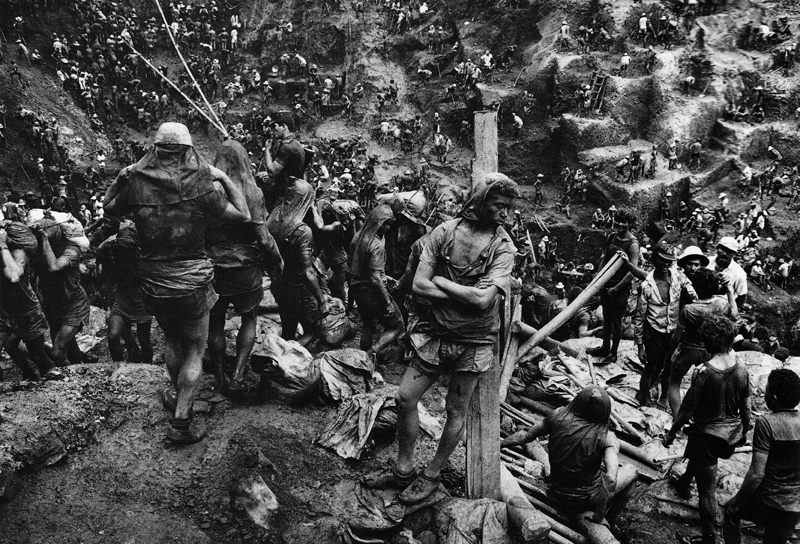Like the late Ansel Adams, photographer Sebastiao Salgado has an immediately recognizable visual style.
In more than 40 years of shooting (he didn’t pick up a camera until he was in his 20s), the Brazilian-born Salgado mostly has photographed other human beings struggling to survive.
His work has taken him from huge gold-mining pits in South America (where 60,000 laborers manually lug bags of dirt up treacherous ladders — looking like insects swarming over an anthill) to refugee camps in Africa and a still-primitive tribe in the jungles of New Guinea.
His work, invariably in black and white, is unsettling. For while his politically charged subject matter is often disturbing — the corpses of African children dead of starvation, the Rwandan genocide, civil war in the former Yugoslavia — his artistry is overwhelming.
Shooting rapidly using natural lighting, he instinctively finds the right angle, the right composition, the right moment to push his shutter button. He discovers beauty in ugliness. Though it’s not mentioned in this documentary, some critics have accused Salgado of prettifying human misery for Western bourgeoise consumption.
“The Salt of the Earth,” an Oscar nominee this year for best documentary feature, follows Salgado’s career through his photographs and his personal commentary.
Directed by the great Wim Wenders and Salgado’s son Juliano Ribeiro Salgado, the film is an overwhelming sensory experience, even as it tugs at our political consciousness.
Seeing his photos blown up to billboard size on the big screen allows us to relish the astonishing detail, the depth of Salgado’s images, the delicate play of blacks, grays and whites.
Salgado’s personal journey is as compelling as his photos. He was trained in economics, discovering photography only after college. But his early education allowed him to look at human suffering through the filter of commerce and industry.
His obsession with human struggle around the globe — frequently against greed and governmental corruption — eventually so soured Salgado that he turned to nature photography, resulting in a book about the Galapagos. He figured mankind was a lost cause.
But his pessimism was turned around when he set his mind to bringing the forest back to his family’s huge ranch in Brazil, which had been denuded by 30 years of drought and the necessity of cutting down trees for commercial sale. A decade-long effort by Salgado and his wife and editor Lelia has resulted in a restoration of his familial Eden and of the photographer’s belief that humanity has the means to save itself.
“Salt of the Earth” isn’t quite the emotional powerhouse of Wenders' last film, a 3-D study of the choreography of the late Pina Bausch, but it more than confirms his status as a master of the documentary form.
As for Salgado, you’ve got to admire his humanism, his art and his determination to make things better.









